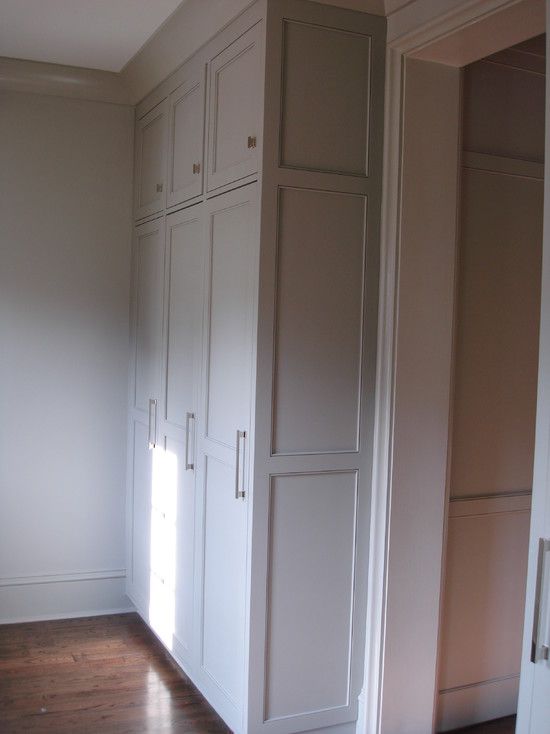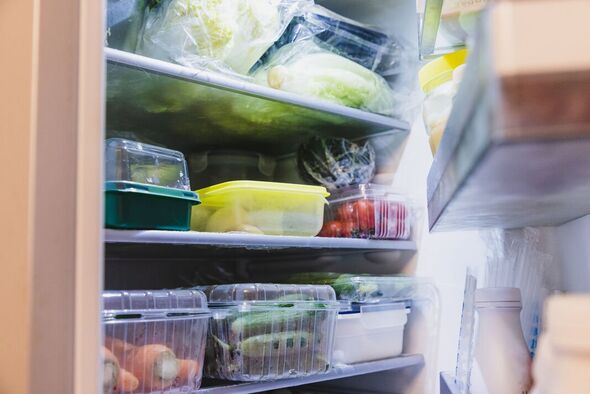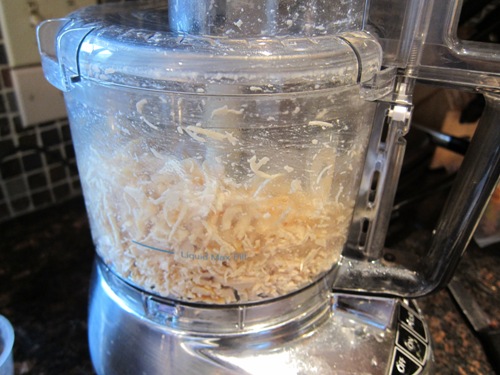How to Caulk Kitchen Counter
To caulk your kitchen counter, you will need:
-A caulking gun
-Caulk (either silicone or latex based)
-A putty knife or old credit card
-Paper towels
-Vinegar
-Water
1. Clean the area to be caulked with vinegar and water. Make sure it is completely dry before proceeding.
2. Cut the tip of the caulk tube at a 45 degree angle, and insert it into the caulking gun.
3. Run a bead of caulk along the seam between the counter and backsplash, using a smooth, even motion. Try to make the bead as small as possible.
4. Use your putty knife or credit card to smooth out the bead of caulk, wiping away any excess as you go.
5. Wipe down the area with a damp paper towel to remove any stray bits of caulk before it dries.
- Wipe down the countertop with a damp cloth to remove any dirt or debris
- Apply painter’s tape along the edge of the countertop where you will be caulking
- Cut the tip of the caulk tube at a 45 degree angle and insert it into a caulking gun
- Apply a bead of caulk along the seam between the countertop and backsplash
- Use your finger or a putty knife to smooth out the caulk bead
- Remove the painter’s tape before the caulk has a chance to dry fully
How to Remove Old Caulk from Kitchen Counter
One of the most common places to find old caulk is around kitchen countertops. Over time, caulk can become dry and cracked, making it difficult to remove. If you’re trying to remove old caulk from your kitchen counter, there are a few things you can do to make the process easier.
First, start by using a putty knife or razor blade to scrape away as much of the old caulk as possible. If the caulk is particularly stubborn, you may need to use a heat gun or hair dryer to soften it up first. Once you’ve removed as much of the old caulk as possible, it’s time to clean the surface.
Use a household cleaner or degreaser and a scrub brush to clean the area where the old caulk was located. Be sure to rinse away all of the cleaner before proceeding. If there is any residual caulk left behind, you can try using mineral spirits or paint thinner to remove it.
Once the surface is clean and free of old caulk, you can apply new caulking if desired. Be sure to follow all manufacturer’s instructions when applying new caulking material.
Silicone Caulk Kitchen Countertop
Whether you’re redoing your kitchen countertop or simply trying to keep it in good shape, one thing you’ll need to do is caulk the seams. Caulking is an important part of any kitchen countertop maintenance because it helps prevent water and other liquids from seeping into the cracks and causing damage. Plus, it gives your countertop a nice, smooth finish.
There are two main types of caulk: silicone and latex. Silicone caulk is more expensive but also more durable and long-lasting. It’s also easier to work with because it doesn’t shrink as much as latex caulk when it dries.
For these reasons, we recommend using silicone caulk for your kitchen countertop caulking project.
To get started, gather all the supplies you’ll need: a tube of silicone caulk, a caulking gun, a putty knife or similar tool, masking tape, and rags or paper towels (for cleanup). Then follow these simple steps:
1) Clean the area where you’ll be applying the caulk with soapy water and let it dry completely. This will help the caulk adhere better.
2) Apply masking tape along both sides of the seam where you’ll be caulking.
This will create clean lines and make cleanup easier later on.
3) Cut the tip off the tube of silicone caulk at a 45-degree angle using a sharp knife (this will help control the flow of caulking). Then load it into your caulking gun.
+ 4) Starting at one end of the seam, slowly squeeze out a bead of caulk while moving steadily along the length of the seam until you reach the other end. Try to keep the bead as even as possible; if it’s too thick in some places and too thin in others, it won’t adhere properly or provide an effective seal against water damage.
Caulk for Quartz Countertops
When it comes to caulking for quartz countertops, there are a few things you need to keep in mind. First, you need to make sure that you use a high quality caulk that is designed for use with quartz. This will ensure that the caulk adheres properly and doesn’t cause any damage to the countertop.
Second, you need to apply the caulk in a thin layer so that it doesn’t take up too much space between the seams of the countertop. Finally, you want to smooth out the caulk so that it provides a clean and professional look.
What Kind of Caulk between Countertop And Backsplash
For most people, the kitchen is the heart of the home. It’s where we gather to cook, eat, and socialize. So it’s important that this space looks and feels its best.
That’s why many homeowners take care to choose just the right countertop and backsplash materials for their kitchens.
But what about the caulking between these two surfaces? What kind of caulk should you use to ensure a tight seal and a beautiful finish?
Here are a few things to consider when choosing caulk for your countertop and backsplash:
1. The type of surface you’re working with. If you have a porous surface like stone or tile, you’ll need to use an adhesive caulk so it will adhere properly.
If you’re working with a non-porous surface like laminate or glass, then any type of caulk will do.
2. The color of your surfaces. You’ll want to choose a caulk that closely matches the color of your countertop and backsplash so it blends in seamlessly.
Clear caulk is always an option if you can’t find an exact match.
3. Your budget. Adhesive caulks tend to be more expensive than non-adhesive caulks, so keep this in mind when making your selection.
4 . The size of the joint you’re filling . Choose a caulk with a small tip if you’re working on a small joint or crack .
For larger joints , opt for a caulk with a wider tip .
Best Caulk for Kitchen Sink Backsplash
When it comes to caulking kitchen sink backsplashes, there are a few things to keep in mind. First, you’ll want to choose a caulk that is waterproof and can withstand high temperatures. Second, you’ll want to make sure the caulk adheres well to both the tile and the countertop.
And third, you’ll want to select a color that matches or complements your kitchen décor.
With those factors in mind, here are our top picks for the best caulk for kitchen sink backsplashes:
1. Gorilla 100% Silicone Sealant Caulk – This caulk is ideal for kitchen sink backsplashes because it is waterproof and can withstand high temperatures.
It also has excellent adhesion properties, so it will stick well to both tile and countertops. Plus, it comes in clear or white colors to match any kitchen décor.
2. Dap Alex Plus Acrylic Latex Caulk – This caulk is also waterproof and heat-resistant, making it ideal for use around kitchen sinks.
It has good adhesion properties and dries quickly, so you can start using your sink right away after caulking. Plus, it comes in a variety of colors to match any kitchen décor.
3. Loctite Polyseamseal All-Purpose Adhesive Caulk – This all-purpose adhesive caulking is another great option for kitchen sink backsplashes since it bonds well to most surfaces including tile and countertops.
It also provides a watertight seal that will prevent leaks around your sink area. Plus, this Loctite product comes in clear or white colors.

Credit: www.youtube.com
What Kind of Caulk to Use on Countertops?
There are a few different types of caulk that can be used on countertops, but the most common and effective type is silicone caulk. This type of caulk is specifically designed to create a waterproof seal that will resist mold and mildew growth. It is also very flexible, so it can accommodate any slight movement that may occur between your countertop and the wall.
Silicone caulk is available in clear or white, so you can choose the color that best suits your needs.
Should I Caulk between Countertop And Backsplash?
It is not necessary to caulk between your countertop and backsplash because the two surfaces will be held together by the weight of the countertop. The only time you would need to use caulking is if there is a gap between the two surfaces that is wider than 1/8″.
How Do You Caulk Counter Tops?
Caulking your countertops is a simple process that can help to prolong the life of your counters and keep them looking their best. When caulking, you will want to use a siliconized acrylic caulk, which can be found at most hardware stores. You will also need a putty knife or other sharp object to scrape away any old caulk and clean the surface before applying the new caulk.
1. Begin by running the putty knife along the edge of the countertop where it meets the backsplash or wall. This will help to remove any old caulk that may be present. If there is a lot of old caulk build-up, you may need to use a utility knife or razor blade to get it all off.
Be sure to dispose of the old caulk properly.
2. Once all of the old caulk has been removed, use a damp cloth to wipe down the area where you will be applying the new caulk. This will help ensure that there is no dust or debris present that could prevent the new caulk from adhering properly.
3. Cut the tip off of your tube of siliconized acrylic caulk at a 45 degree angle using scissors (this will create an opening about 1/4 inch wide). Insert this tube into a caulking gun and apply even pressure as you move along the edge where you will be caulking, filling in any gaps as you go. Try not to stop in one spot for too long, as this can cause an uneven application.
4. Once you have finished going along the entire edge, smooth out any rough spots with your finger (wearing gloves) and then clean up any excess caulking with a damp cloth or paper towel before it dries completely (typically takes about 24 hours).
How Do I Fill the Gaps in My Kitchen Countertop?
If your kitchen countertop has gaps or cracks, there are a few different ways that you can fill them. One way is to use caulk. Caulk is a flexible sealant that comes in a tube and is applied with a caulking gun.
It can be used to fill small gaps and cracks, and it dries quickly. Another way to fill gaps in your countertop is to use epoxy. Epoxy is a strong, durable resin that can be used to fill larger gaps and cracks.
It takes longer to dry than caulk, but it will create a stronger seal. You can also use putty to fill gaps in your countertop. Putty is a pliable material that can be molded into shape and then left to harden.
It takes longer to dry than both caulk and epoxy, but it creates a very strong seal.
How to install silicone caulk around kitchen countertop, shower, bath tub etc.
Conclusion
If you have gaps in your kitchen counter where caulking is needed, follow these steps to apply caulk like a pro. First, cut the tip of the caulk tube at a 45-degree angle and insert it into a caulk gun. Next, load the gun with caulk by depressing the trigger until caulk appears at the nozzle.
Then, starting from one end of the gap, slowly run the nozzle along the length of the crack while applying even pressure to dispense an evenly-sized bead of caulk. To smooth out the bead, wet your finger with water and lightly run it along the length of the caulking. Finally, clean up any excess caulk with a damp cloth before it dries.







